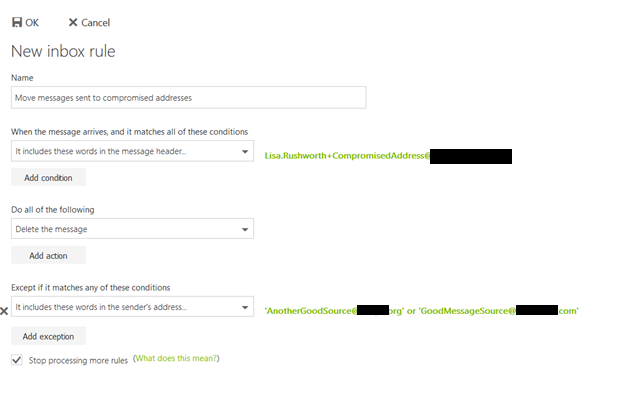Sometimes you need to provide your company e-mail address – registering for a conference or training class, signing up for an industry newsletter. Unfortunately, this can lead to an inundation of unwanted mail.
Exchange Online supports something called “sub-addressing” (so does Gmail … and you can test your email service’s support of this feature by sending yourself a message from some other source. If it gets delivered, you’re good. If not … bummer!). Sub-addressing allows you to slightly modify your e-mail address to customize it for every situation – between your last name and the ‘@’ symbol, put a plus and then some unique text. It will look like Your.N.Ame+SomeIdentifier@domain.ccTLD instead of Your.N.Ame@domain.ccTLD.
When signing up for a Microsoft newsletter, I can tell them my e-mail address is Lisa.Rushworth+MicrosoftSecuritySlate@domain.ccTLD … and messages to that address will still be delivered to me. When I sign up for the NANPA code administration newsletter, I can tell them my e-mail address is Lisa.Rushworth+NANPACodeAdmin@domain.ccTLD.
Should you start receiving unwanted solicitations to the sub-address, you can then create a rule to delete messages sent to that address.
You can also alert the person to whom you provided the address that their contact list may have been compromised … although my luck with that hasn’t been particularly good. Most companies deny any possibility that they might be the source of disclosure. Even when the address disclosed is Me+YourCompanyNameHere@… because that is something someone randomly generated. Sigh!
